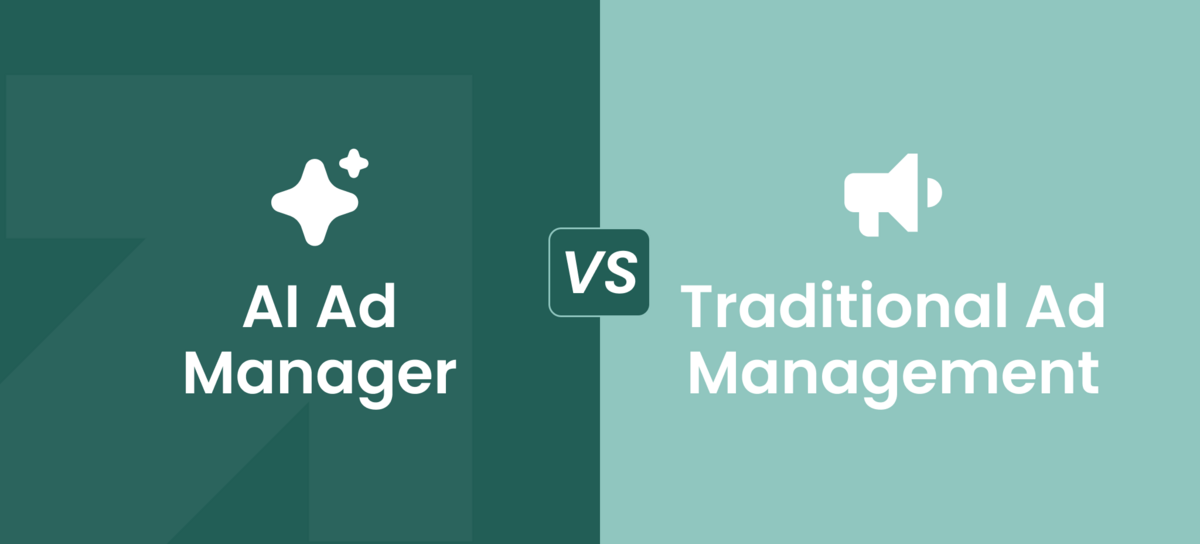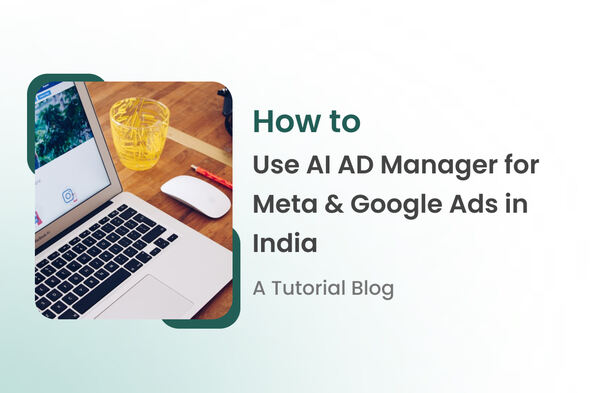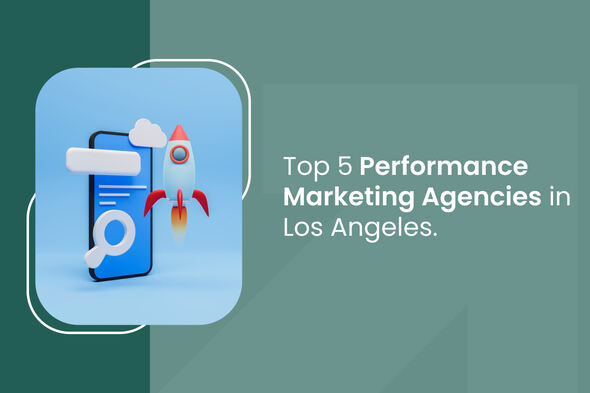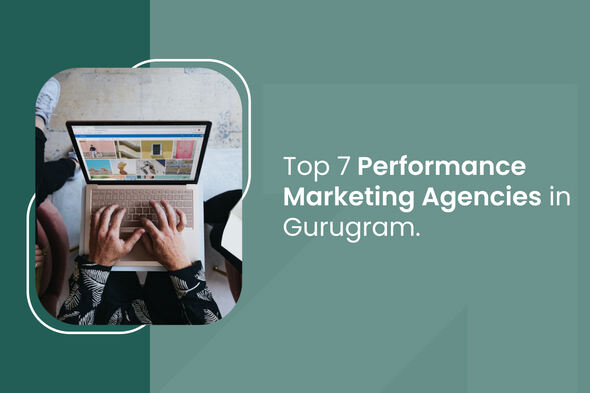The advertising world is demanding. Many businesses feel caught between the high cost of agencies and the overwhelming complexity of doing it themselves. The choice between a modern AI Ad Manager, like GrowEasy, and traditional platforms is fundamentally about time, peace of mind, and the quality of your results. This guide frames the comparison by focusing on which tool genuinely helps you grow your business better.
Key Highlights
- AI ad managers leverage machine learning to automate campaign optimization, targeting, and bidding, significantly reducing manual tasks and speeding up decision-making processes compared to traditional ad management.
- Traditional ad management platforms provide marketers with full control and transparency, relying on human expertise for strategy, manual bid adjustments, and creative testing, which can be preferable for complex campaigns requiring hands-on oversight.
- Key features of AI ad managers include real-time optimization, predictive analytics, and programmatic buying, enabling rapid adjustments to bids and creatives that boost ROI and adapt quickly to market changes.
- Traditional platforms such as Google Ads and Facebook Ads Manager require more time and experience to optimize campaigns effectively but offer granular control and detailed reporting, making them suitable for marketers who prefer direct management.
- The primary differences between AI and traditional ad management lie in automation versus manual setup, real-time versus periodic optimization, predictive analytics versus experience-based decisions, and programmatic buying integration versus direct platform control.
- Many businesses find a hybrid approach combining AI’s efficiency and scalability with human oversight delivers optimal results, balancing automation benefits with the need for transparency and strategic
Understanding AI Ad Managers and Traditional Ad Management
What Is an AI Ad Manager?
Imagine having a tireless, brilliant expert who works 24/7 to manage your ads. That’s an AI Ad Manager. It is a software tool that uses artificial intelligence to automatically handle the hardest parts of digital advertising—optimizing, targeting, and bidding. This means less time spent drowning in data and more time focusing on your customers.
Here’s what makes these platforms stand out and offer genuine relief:
- Launch AI-powered ads effortlessly.
- Leverage cutting-edge AI to create high-converting campaigns.
- They continuously optimize by learning from results.
- The goal is NO Agencies, NO Ad manager, NO Stress.
Quick Fact: GrowEasy enables users to launch complex, targeted ad campaigns in approximately five minutes. You can Start getting leads in 5 minutes – no marketing team needed.
AI Ad Managers transform advertising from a resource-intensive chore into a scalable, data-driven system.
Overview of Traditional Ad Management Platforms
Traditional platforms, like Google Ads and Facebook Ads Manager, give you full control and transparency over every detail. However, this control is expensive: it demands your time and specialized expertise. You must manually create ads, select audiences, and continuously adjust bids and budgets based on your own experience.
The reality for many marketers using this route is facing common growth barriers:
- Agencies are expensive and take weeks to deliver.
- Doing it yourself is overwhelming—too many tools, too little time.
Traditional platforms are suitable for businesses that have the expertise and time to manage continuous, detailed adjustments.
Key Differences Between AI Ad Managers and Traditional Ad Management

The simple truth is: AI ad managers prioritize speed and efficiency. They use automation to deliver results with less effort. Traditional management prioritizes hands-on control, which inherently requires more of your time and expertise.
Automation and Optimization Capabilities
AI ad managers exist to take the complex optimization burden off your shoulders. They continuously analyze data in real time, day and night, making dynamic adjustments to bids, budgets, and targeting.
Key automation benefits include the comfort of:
- 24/7 optimization: Our system works round the clock to optimize your campaigns for maximum performance.
- Dynamic bid adjustments.
- Real-time creative testing.
AI can instantly reallocate spending to top-performing ads. This process would take a human hours to perform manually. This automation helps businesses scale without sacrificing precision.
Ad Targeting Precision and Personalization
AI ad managers deliver significantly enhanced targeting. They analyze vast amounts of data to dynamically identify the high-value audiences most likely to convert. Unlike static, predefined segments used traditionally, AI tailors ads to individual behaviors.
AI Targeting Benefits:
- Hyper-targeted audience identification.
- Personalized ad creatives based on user data.
- Continuous learning to refine targeting.
AI can spot emerging customer trends faster than human analysis, meaning less wasted spend and higher engagement.
Setup and Account Management Differences
AI ad managers radically simplify campaign setup. GrowEasy, for example, autonomously creates creatives, ad copies, and budget plans for you after you share your business goals. Traditional platforms, conversely, demand detailed, hands-on setup—you must manually select audiences, bids, and creatives.
| Feature | AI Ad Manager (GrowEasy Example) | Traditional Ad Management |
| Automation | High/Full automation; NO Stress | Manual setup and adjustments required |
| Targeting | Predictive, hyper-targeted, real-time personalization | Relies on predefined segments and marketer intuition |
| Optimization Speed | Real-time, continuous (24/7 optimization) | Periodic, slower, requires manual intervention |
| Cost | Lower ongoing management cost; Simple, Growth-Focused Pricing | Higher indirect labor cost (time/expertise) |
| Control | Less transparency; requires trust in automation | Full oversight and granular control |
| Scalability | High: manages large campaigns without proportional resource increase | Limited: resource-intensive and requires more time |
Benefits and Drawbacks of AI Ad Managers and Traditional Ad Management
AI tools boost efficiency, saving you time and improving ROI. Traditional management offers control, but demands your ongoing commitment and expertise.
Advantages of AI Ad Managers
AI ad managers deliver unmatched efficiency by automating complex tasks. This frees you to focus on the big picture of your business, not bid adjustments.
Key advantages that save time and boost results:
- Real-time data analysis for quick optimization.
- Scalable campaign management without needing extra resources.
- Predictive insights to anticipate market trends.
- Personalized ad delivery that boosts engagement.
Quick Fact: GrowEasy's continuous optimization has been reported to lead to an increase of +16.8% in conversions and +24.5% in engagement rates. One founder reported achieving a "higher return on ad spend than ever before" using the platform.
Limitations of AI Ad Managers
While powerful, AI ad managers require a leap of trust. They often lack full transparency, making it difficult to understand why the algorithm made certain decisions. If your campaign is extremely niche or complex, the AI’s approach might not fit perfectly. Overreliance on automation also risks missing subtle shifts that human insight might catch.
Strengths and Weaknesses of Traditional Ad Management
Traditional management is the preferred choice for those who value hands-on strategy and transparency. Strengths include full oversight of budgeting and creatives. However, manual optimization is demanding, time-consuming, and requires significant expertise. Traditional methods are also slower to react to real-time data, risking missed market opportunities.
Practical Use Cases: When to Choose AI Ad Managers or Traditional Ad Management

The decision truly depends on your need for speed and scale versus your need for manual control.
Ideal Situations for AI Ad Managers
AI ad managers shine in scenarios where you need rapid, data-driven decisions and maximum scalability. They are perfect for the local service provider needing reliable, immediate lead flow.
Ideal uses include:
- Local service providers (Dentists, Salons, Real estate agents) who need immediate, high-quality lead flow.
- Businesses with limited time or expertise for manual management.
- Advertisers needing quick bid adjustments and budget reallocations.
Industry Benchmark: GrowEasy Features, Built for the Local Community
- Instant Campaign Setup: Launch a full campaign in approximately five minutes.
- AI-Driven Targeting: Advanced machine learning optimizes targeting for precision.
- Multilingual Support (Vernacular Ads): Create ads in multiple regional languages, including Hindi, Tamil, Bengali, Telugu, and Marathi. This allows you to reach diverse regional audiences and increase engagement genuinely.
- WhatsApp Integration: The system offers seamless WhatsApp Integration. Crucially, an AI WhatsApp Agent talks to and qualifies leads. This solves the agonizing problem that Leads are dropping off without smart follow-ups.
When Traditional Ad Management Is Preferable
Traditional ad management is best when full transparency is paramount. It suits teams with deep expertise who need to manually tailor strategies or test creative elements hands-on.
Key scenarios include:
- Highly specialized targeting needs.
- Regulatory or compliance constraints are present.
- When there is limited trust in AI automation.
Integration and Technical Considerations
For AI to feel like a truly helpful partner, it must connect easily with the tools you already use. Most AI tools integrate seamlessly via APIs with major platforms like Google Ads and Meta Ads, ensuring data flows correctly.
Compatibility with Major Advertising Platforms
AI ad managers are designed to integrate seamlessly with the major players, including Google Ads and Meta Ads. This allows you to leverage AI's optimization power without having to abandon your familiar advertising interfaces. The API connections facilitate real-time data syncing.
Technical Setup and Data Privacy
Technical setup involves linking accounts and setting up tracking pixels. You must grant appropriate data permissions. Marketers also must ensure they comply with data privacy regulations (like GDPR and CCPA). AI tools must maintain secure data handling practices.
Cost, ROI, and Performance Analysis
The true value of an ad tool lies not in its monthly fee, but in the Return on Investment (ROI). AI ad managers often deliver a higher ROI because they optimize bids dynamically, reducing wasted spend.
Cost Considerations and Budget Impact
AI ad managers may have a higher upfront investment via subscription fees, but the automation significantly lowers ongoing labor costs. Traditional management may have lower platform costs, but the high time commitment increases indirect costs.
Quick Fact: GrowEasy offers simple, growth-focused pricing, with monthly subscriptions starting at just ₹1,499 / $19.
Measuring ROI and Performance Metrics
Measuring ROI accurately is essential for confirming your tool is working hard for you. Key metrics include Return on Ad Spend (ROAS) and Cost Per Acquisition (CPA). AI tools provide real-time dashboards for continuous tracking.
To maximize ROI and feel confident in your advertising spend, focus on:
- Aligning performance metrics with core business goals.
- Monitoring both short-term results and long-term trends.
- Using data insights to optimize budgets regularly.
Conclusion: Choosing the Best Approach for Your Advertising Needs
Choosing the right approach depends on whether you seek automated, scalable efficiency (AI) or granular, hands-on control (Traditional). AI ad managers are transforming the digital space by offering maximum growth with minimal manual stress.
Here are the 4 simple steps to choosing the right ad management approach:
- Assess Your Goals and Resources: Decide if you need speed and scale (AI) or if you have the resources for continuous manual effort (Traditional).
- Evaluate Time Commitment: Choose AI if you want NO Stress, NO Ad manager and have limited time. Choose Traditional if your team has the time and expertise for continuous manual updates.
- Prioritize Key Features: For the best results, look for crucial localized features and benchmarks like AI-driven targeting, instant campaign setup, and essential WhatsApp lead integration.
- Consider a Hybrid Strategy: For optimal performance, combine AI’s automation efficiency with human strategic oversight. This balances the benefits of speed with the need for smart, human strategy.





